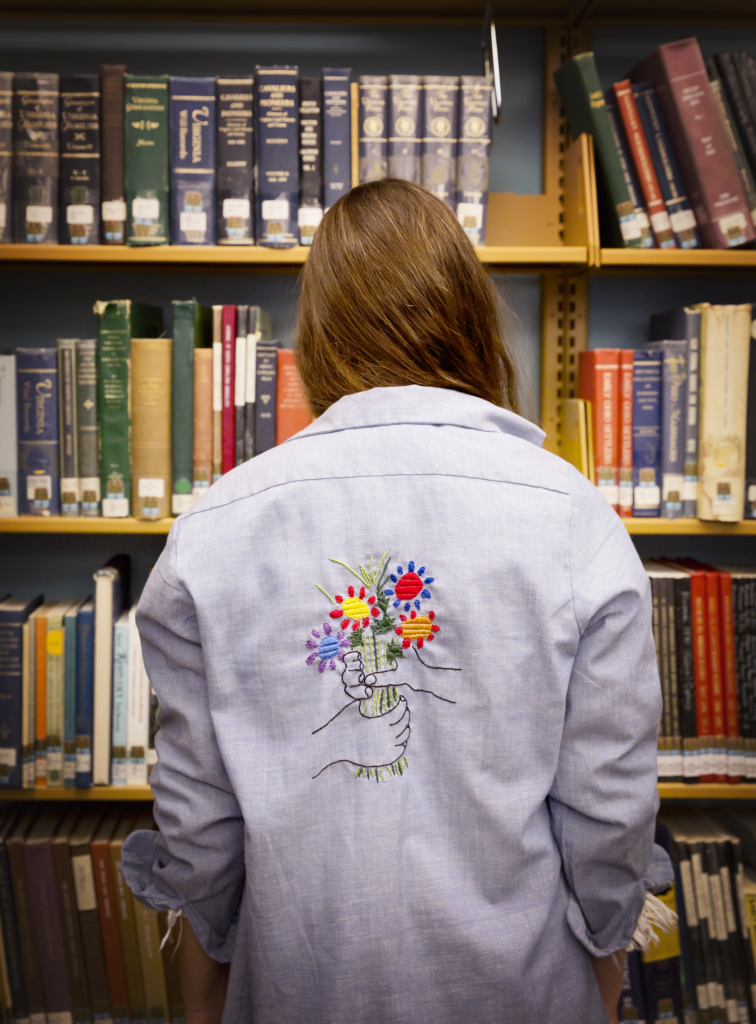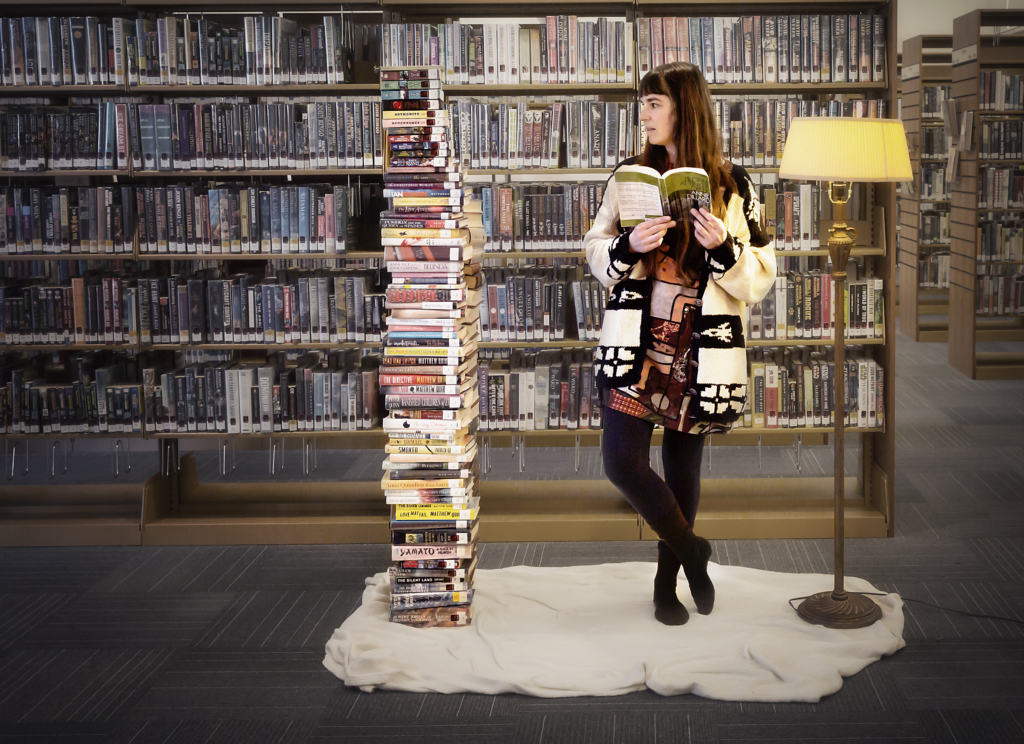HOW DOES THE MONEY WE SPEND ON CLOTHES SHAPE REAL PEOPLE’S LIVES?
Touch
your shirt. Someone had a hand in making it. Think of your shirt like a letter. From a woman you don’t know, and now her handiwork is wrapped around you, your body, in this place, like a hug. Think of it as a hug. From a woman in India. China. Bangladesh. Maybe she has a child or two, whom she loves like you love whomever you love most. Maybe she woke up late this morning and it was chaotic for her to put on pants, sweep her hair back, try to scrape together breakfast for her kids.
Or maybe she had a slow morning, time to contemplate her day as she ate her toast. Maybe she stubbed her toe on the way to work and cursed under her breath, even though she swore to herself yesterday she was trying to stop.
Maybe she loves her job, going to a factory to make clothes. Maybe she hates it. Maybe most days she does it because it is what she does, and we all need money somehow to sustain ourselves and the people we love.
Take a moment and realize this woman who made your shirt. Pray or contemplate or dance or shout or shoot a basket or blink really fast or do whatever it is you do, in thanks for her.
“MADE IN BANGLADESH”
In 2012 a fire in a Bangladesh textile factory killed 112 people. The people there made garments for American and European stores, brands in most of our closets. There were not emergency exits in the building, and managers stopped workers from finding an escape. The event drew attention to the dangerous working conditions the fast fashion industry creates through its pursuit of profit.
I recently stumbled upon the terms “fast” and “slow” fashion while faced with the responsibility of how to spend my first salaried paycheck. I have felt the little itchy tag on the insides of my clothes and dismissed the three words “Made in India” my whole life, even cutting these tags out of shirts to avoid the scratchy annoyance. But, what do these words actually mean?
Fast fashion functions under a disposable mindset, rolling out the latest trends for consumers to purchase at cheaper prices, clothes that will be worn while they are trendy, and thrown away when they are not. In order to make the highest profit, fast fashion often hires out labor to factories in which they can pay the workers low wages, where working conditions are unsafe. Many of these workers are women and children.
DEVALUING WOMEN’S WORK
Machines make it easy to undervalue the work of women. In “Women and the Rise of the Novel: A Feminist-Marxist Theory,” Josephine Donovan discusses how the value of traditionally female work such as baking and sewing came to be devalued by our society and economic system.
She explains that before the widespread use of machines, our society operated under a use-value system, in which women baked a pie or sewed a dress to be used by someone with whom they were immediately connected, such as their neighbor or daughter. There was not a monetary exchange in this deal; instead, the relationship between creator and user was based upon emotional ties. Women were artisans, co-creators in building homes and sustaining.
When machines began to be used in the manufacture of goods, however, respect for the art women created — and as a result, respect for women ourselves — began to erode. Our society’s mindset switched from one of use-value to one of exchange-value, a system in which goods are produced with the intent of selling or bartering. Rather than a focus on the emotional relationship present between artisan and user, emphasis was now placed upon the monetary worth of an item.
The more of an item that could be produced, the more money that was made for the person who owned the machines. The person who ran the machine to create the item was often paid meagerly. Because the machines could produce goods much more efficiently than a real, live woman hand sewing together 400 pieces of fabric to make a quilt, machines garnered more profit, decreasing the price of goods and making women’s contributions unnecessary.
I think, perhaps, we are living in a time when our mindsets are beginning to shift and again recognize the value in making something by hand for someone we love. Again, I hope, we are beginning to uphold the dignity of tra-ditionally female work, valuing process and what it can teach us. It seems to me, rather than joining the exchange-value mindset that discredits female artisanship, we should reclaim these arts for ourselves, glorifying the craftswomanship it takes to create them, and celebrating the women who choose to do this. These are our roots.
AN ALTERNATIVE
The slow fashion movement does the opposite of what we’ve been trained to do as consumers: it tells us to buy less. It tells us to buy pieces that are timeless, made well and last. It tells us to use our paychecks conscientiously, buying products that support living wages, education and empowerment for the people who make them. It ensures children aren’t the ones making shoes for me to wear twice, at the cost of their education.
A growing number of companies such as Krochet Kids, Pact and Tribe Alive are grounding their fashion lines in sustainable fabrics and ethically sourced tailoring — valuing handiwork, people and the connection between. These companies are creating fair-paying jobs and education opportunities for the women and children in the communities in which they work.
The drawback for the consumer? Pieces made locally or by hand are more expensive, because they take more time and the creators are compensated fairly for their time and skill. For those of us who can’t afford to pay more money for clothes that have been ethically sourced, perhaps we can embody the spirit of slow fashion through shopping at thrift stores, borrowing, repurposing. Having less, waiting.
If having three less shirts is what it takes while I save up to buy one in which the woman who made it was paid fairly and treated well, then hey — getting everything I want when I want it is never actually that much fun, anyway.
EXCEPT THAT SOMETIMES IT IS.
The other day I found myself pulled magnetically into the women’s clothing area of one of my favorite chain stores, face-to-face with the most beautiful black floral jumpsuit I have ever seen. I am a sucker for black, floral, V-necks, fitted waists and things that are a little weird, like jumpsuits, and yep, you guessed it, this one had it all. Here I was, days after I’d discovered slow fashion and vowed not to keep buying things to cover my body that cost another person more dearly than it cost me, and I was already feeling my resolve wavering.
After all, I am one person against a world of people who will, out of necessity, ignorance or circumstance, probably never stop buying clothes made in places in which people are treated poorly — could my opting out really make much of a difference?
We are living in a time when our mindsets are beginning to shift and again recognize the value in making something by hand for someone we love.
It was right after this experience that I stumbled into another of my favorite chain stores and upon Sarah Lazarovic’s book “A Bunch of Pretty Things I Did Not Buy.” It was pretty — orange cover, watercolor art illus-trating the insides, biting authorial wit.
I bought it. Ironic, I know. But in it, it contained a truth I need to remember: I have the power to choose. My desires for more don’t have to control me; I can, as Lazarovic states, be content with looking at something beautiful and knowing I don’t have to possess it in order to still be whole. I feel like a throwback from fifth-grade D.A.R.E. class, but it’s true — I can walk away and be OK.
THOSE WHO DOUBT
Not everyone believes we can make a difference by bypassing chain store’s offerings for an ethically made shirt, however. Michael Hobbes, writing “The Myth of the Ethical Shopper” for the Huffington Post is one of those people. He argues lasting, positive change is going to come from policies that put pressure on countries where clothing is produced to ensure working conditions are safe and humane for workers. Rather than having reputation-concerned international companies regulate factory working conditions at the expense of workers’ care, Hobbes argues we should enact laws that give this power to the governments of the countries themselves.
I think he’s right. But in the meantime, do I continue to buy from stores that use sweatshops to produce their clothing?
Perhaps slow fashion is, after all, just a great advertising ploy, using the women whom I want to help, as well as my need to feel the connection that has been lost in an exchange-value economy, to sell me things.
Is it even right to use the stories of women living in poverty to sell clothes? Are these companies romanticizing and exotifying human beings? If the clothes were made in a tiny U.S. town or by an average woman anywhere in the “developed” world, would the company tell me these women’s stories, or would they be rendered irrelevant?
In the dangerous comment vortex below Hobbes’ article, Savanah Case makes a good point: “Just because most US citizens do not wash their recyclable yogurt containers and [instead] throw them in the trash doesn’t mean I will.”
My dad once told me when I was worrying about something: it’s not my job to save the whole world.
Henri Nouwen said it this way: “We are not called to save the world, solve all problems and help all people. But we each have our own unique call, in our families, in our work, in our world … then we will discover that our faithfulness to a small task is the most healing response to the illnesses of our time.”
Maybe I am not going to enact a law that creates change — I hope that someone with that power does, and soon. But I can wash my recyclable yogurt container, or say “No” to a shirt.
A NOTE ON HYPOCRISY
and the floral jumpsuit story: as my conscience warred with my unsated desire for the jumpsuit, I became agitated and lashed out at my well-intentioned mother who was shopping with me. It was even her birthday.
I do not want to forego harming women in other parts of the world only to harm the woman who allowed me to be in the world, or any other women — or men — with whom I interact on a regular basis.
WHAT NOW?
I don’t know how to go through our daily lives without being weighed down by the guilt of all this knowledge. I don’t think guilt is the answer, though. What has happened has happened, but that doesn’t mean it has to continue to. Perhaps we can be appreciators of beauty while at the same time acknowledging its entanglement with injustice, and speaking about that. Perhaps we can make small choices, like buying our clothes from thrift stores, borrowing from friends’ closets, buying less. Perhaps we can practice gratitude for the makers of the things we take for granted.
Touch your shirt.
Someone had a hand in making it.
SHOP LOCAL, SHOP SLOW
Some of our favorite online and local stores committed to ethically sourced products:
WISH
CAPE GIRARDEAU
A boutique advocating for inclusive employment for people with disabilities, this store offers a handmade jewelry line created by local Anne Soust. Wish also carries other fair trade and handmade jewelry lines from women artisans in Georgia, Vietnam and Ireland.
YOGA EAST
CAPE GIRARDEAU
In addition to yoga classes, locals can find yoga clothing essentials made in the U.S. from organic cotton in downtown Cape Girardeau. No chemicals are used in the process of creating the Soul Flower clothing line, and artisans are paid a fair wage for their work.
KROCHET KIDS
KROCHETKIDS.ORG
Krochet Kids operates in Peru and Uganda, training women in textile production and paying them anti-poverty wages. This clothing line’s mission is to connect the consumer with the maker of its clothes, so each piece is signed by the woman who made it.
PACT
WEARPACT.COM
This company uses only organic cotton for all of your basic tee, tank top, legging and underwear needs. Pact’s no-toxic dye or pesticide policy is enacted in Fair Trade certified facilities, ensuring workers are treated and paid humanely.
SHOP SECONDHAND
Get into the spirit of slow fashion without spending your whole paycheck by shopping at our local thrift stores. Your style choices won’t be creating more demand, and profits benefit local people right here in our community.
SAFE HOUSE FOR WOMEN
CAPE GIRARDEAU
Offering a safe place for women to find shelter from domestic violence as well as advocating for an awareness of domestic abuse in our community, Safe House for Women’s thrift shop helps fund their services.
GOODWILL
CAPE GIRARDEAU
Working to bring employment to all people, especially those with barriers to employment, Goodwill works at the community level to help people achieve employment and education.
ADULT AND TEEN CHALLENGE
CAPE GIRARDEAU
100 percent of the funds for Teen Challenge’s residential ministry for men working through addictions come from donations. Be a part of this ministry by purchasing some one-of-a-kind clothing and home finds at their thrift store.




